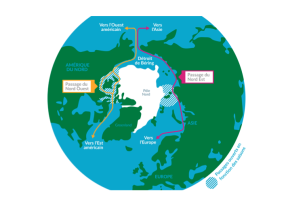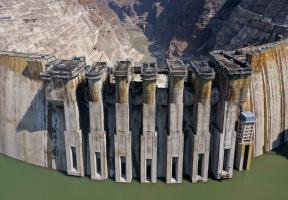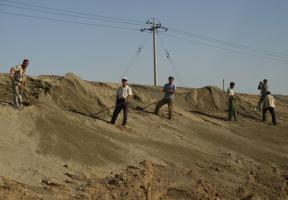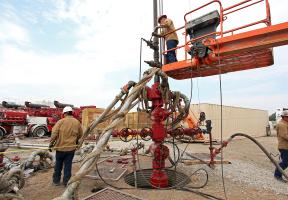Redrawing the Map of the Energy World
10 min read
Energy plays a unique role on the world stage, guaranteeing military strength, economic development, transportation of people and goods, and social well-being. The price of energy, and oil and gas in particular, is set by the global interplay of supply and demand. For many oil and gas producing nations, it has become such a vital part of their economy. And in recent decades, people worldwide have become increasingly aware that energy also impacts another key issue: .

© THINKSTOCK - China stands out as the world's new energy giant. Here, we see the Shanghai Bund from an unusual viewpoint.
Six key factors in the geopolitics of energy are described below.
China's Rise is Redrawing Global Boundaries
The balance between major powers is a historical fact of geopolitics. Using the evolution of consumption, which reflects economic growth, as an indicator, the rise of China appears in all its magnitude:
- In 2000, two regions were on the podium : the U.S. consumed 2,250 million metric tons of oil equivalent (Mtoe) and Europe 1,850 Mtoe, accounting for nearly half of all global consumption. China consumed just over 1,150 Mtoe.
- Around 2010, China surpassed Europe and then the United States.
- In 2013, consumption in the United States and Europe stabilized or even declined, while China exceeded 3,000 Mtoe.
- In 2024, China consumed more than Europe and the United States combined.
Other countries also "emerged" between 2000 and 2013. India increased its consumption by 80% and Brazil by more than 50%. Meanwhile Russia, the twentieth century's other postwar superpower, added a mere 18% to its total. These changes have redrawn boundaries all over the world.
The United States, Leading Producer of Gas and Oil
The rise of shale hydrocarbons in the late 2000s revolutionized the US . These hydrocarbons, extracted using a controversial technique known as , enabled the US to increase its gas production by 71% and more than double its oil production between 2009 and 2021.
As a result, the United States has become the world's leading producer of oil and gas. It is also the leading exporter of , which gives it the capacity to supply Europe, which has shut itself off from Russian gas and oil since the invasion of Ukraine in 2022.
Climate and Fossil Fuels: A Necessary Shift
Climate change demands a profound transformation of the global energy system. The has outlined a pathway to achieve net-zero emissions by 2050. This scenario requires a sharp reduction in the use of fossil fuels, which currently account for nearly 80% of the global energy mix, bringing their share down to 20%. , in particular, must be completely phased out. At the same time, low-carbon energy sources - such as renewables and nuclear - should represent at least half of global energy consumption.
However, the world remains far from this trajectory. To limit to +1.5°C or +2°C by 2100, emissions must decline rapidly. This is the central goal of the Paris Agreement, negotiated at the international level under the leadership of the United Nations.
Renewables and Nuclear Energy are Gaining Ground
In addition to being largely carbon-free, renewable energies and nuclear power have the advantage of being produced locally, which limits dependence on other countries. However, this does not mean that there are no economic challenges, particularly when it comes to manufacturing the necessary equipment. Renewable energies, particularly solar photovoltaic energy, are growing very rapidly in China, while their development remains slower in Europe and the United States.
According to the IEA scenario, by 2040, 90% of will come from renewable energies (70% of which will be wind and solar power), and 10% from nuclear power.
Technologies and Innovation are Potential Game Changers
Energy sufficiency is essential to achieving climate goals. Technology is also indispensable: , better use of and , electric mobility, capture and storage, etc. Innovations progress with each “shock” encountered. They give large industrial groups the responsibility to develop them and a role in the geopolitical game.
Advances in technology are the driving force behind innovation, which is reflected in the new global balance of power. China is no longer the world's factory, and has moved its focus from "Made in China" to "Designed in China". According to the latest report from the World Intellectual Property Organization (WIPO), while the United States was for a long time in the lead, it is now China that remains the main source of international patent applications. It is followed by the United States, Japan, South Korea and Germany.





















